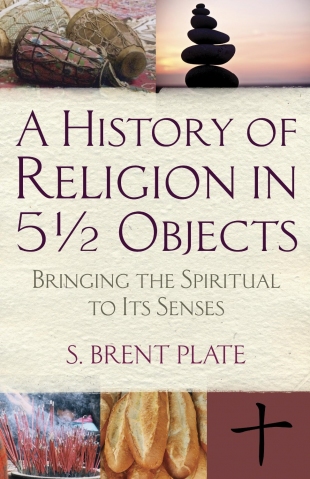S. Brent Plate is visiting associate professor of religious studies at Hamilton College and cofounder and managing editor of Material Religion: The Journal of Objects, Art, and Belief. In this extraordinary work, he explores the religious history of five objects, each with its corresponding sense:
• Stones & Touch
• Incense & Smell
• Drums & Sound
• Crosses & Sight
• Bread & Taste
• The Incomplete Human Body
There is a philosophical richness and a lyrical appreciation of these objects which is endearing. Anyone who is "a stone person" will be blown away by Plate's sensuous and sensitive readings of these material things. Whenever we get together with another stone person, we swap stories about the power of these creations of God. We talk about the magical qualities of smooth stones that are "formed, reformed and transformed."
Plate marvels at the different uses for stones: carried for protection, studied for scientific research, used as a weapon for capital punishment, and revered as sacred sites. The author ponders the Dome of the Rock in Jerusalem and Uluru (Ayer's Rock) in the outback of Australia. He introduces us to the garden art of stone setting by Isamu Noguchi, and we hear Andy Goldsworthy pay tribute to stones: "A long resting stone is not an object in a landscape but a deeply ingrained witness to time and a focus of energy for its surroundings."
Have you ever stood in a graveyard and felt the silent humming of the stones that stand watch over underground bodies? Have you ever visited Indonesia and witnessed the white stones on both sides of the road? Have you heard the stories about stones that serve as houses for the deities in the Shinto faith? Stones are much more than they seem to be. No wonder Plate refers to them as "manifestations of a divine force, ritual objects, markers of past events."
Be sure to give the special stone you have found a welcome home on a shelf, desk, table, or altar. Don't take your stone for granted but try to lavish your attention on it. Never be shy about fondling or caressing your stone — it likes being touched. These are ways in which stones display character, agency, and power. This is part of what it means to love things and to embrace them with a full heart and open mind.
Plant invests the same high level of imaginative energy in the chapters on incense, drums, crosses, and bread. He succeeds in helping us see that religion is best expressed not in transcendent experiences but in "sensual engagement with the physical objects of the world." Hopefully, this poignant work will draw many to see and appreciate that objects have their own voice, worth, power, and magic.
